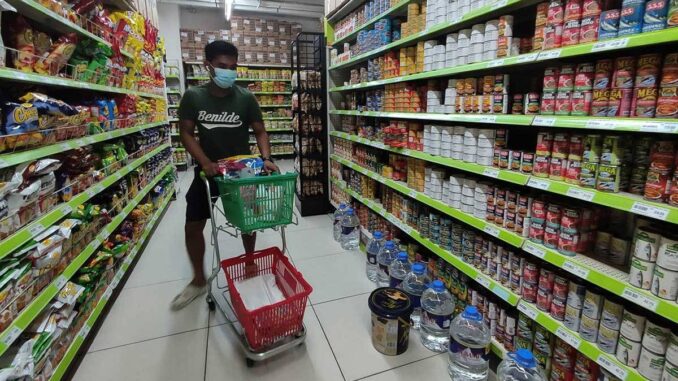
RICE supply gains due to lower tariffs could help bring this month’s inflation to an over four-year low, Bank of the Philippine Islands (BPI) said.
The Ayala-led bank expects consumer price growth to hit 2.5 percent in September, down from 3.3 percent a month earlier.
If realized, it would be the slowest since October 2020’s 2.3 percent.
“Taking into account the latest data … the improvement in rice supply will likely continue to pull down the headline print,” BPI said in a statement on Thursday.
In June, President Ferdinand Marcos Jr. ordered the tariff on rice imports be slashed to 15 percent from 35 percent in a bid to help rein in inflation, which was threatening to breach the 2.0- to 4.0-percent target due to higher food prices, particularly for rice.
Officials have said that the impact would be felt beginning August.
Last week, the Philippine Statistics Authority reported that rice inflation had slowed to 14.7 percent last month from 20.9 percent in July. It added that the rate could drop further as supply improves.
Data from the Bureau of Plant Industry showed that rice imports accelerated to 296,350.9 metric tons (MT) in August compared to 167,403.8 MT in July.
BPI said that inflation could “bounce back as favorable risks fade,” but it still expects the rate to average within target at 3.4 percent this year and 3.0 percent in 2025.
“Upside risks include a potential La Niña in the 4th quarter, as well as the African swine fever, which could drive meat prices higher,” the bank said.
“However, stable commodity prices amid the economic slowdown in major economies like China may offset these risks,” it added.
The Bangko Sentral ng Pilipinas (BSP) last month revised its inflation projections and said that the outlook continued to lean toward the downside.
The risk-adjusted forecast for 2024, however, was raised to 3.3 percent from 3.1 percent but that for 2025 was cut to 2.9 percent from 3.1 percent. The central bank expects an increase to 3.3 percent in 2026.
The baseline forecast for this year was also hiked, to 3.4 percent from 3.3 percent, while that for 2025 was trimmed to 3.1 percent from 3.2 percent. For 2026, the BSP expects inflation to settle at 3.2 percent.
“With a favorable inflation outlook, the BSP may continue reducing its policy rate in the coming months,” BPI said.
“A substantial rate cut from the Fed (Federal Reserve) in September would give the BSP more room to cut its own rates further,” it added.
The central bank’s benchmark rate currently stands at 6.25 percent following a 25-basis-point cut last month.
BPI expects the central bank to keep easing, potentially by around 100 basis points next year.
It added that it might be optimal for the BSP to cut the reserve requirement ratio first before again lowering the policy rate in December.
BPI senior economist Emilio Neri has said that the central bank has the flexibility to alternate between cutting the policy rate and reserve requirements as long as liquidity and monetary conditions support its price stability mandate.
BSP Governor Eli Remolona Jr., for his part, has said that the reserve ratio could be cut to 5.0 percent from 9.5 percent.
Lowering RRR — the percentage of deposits and deposits that banks must keep and not lend out — will free up money that can be used for productive activities and grow the economy.


Be the first to comment